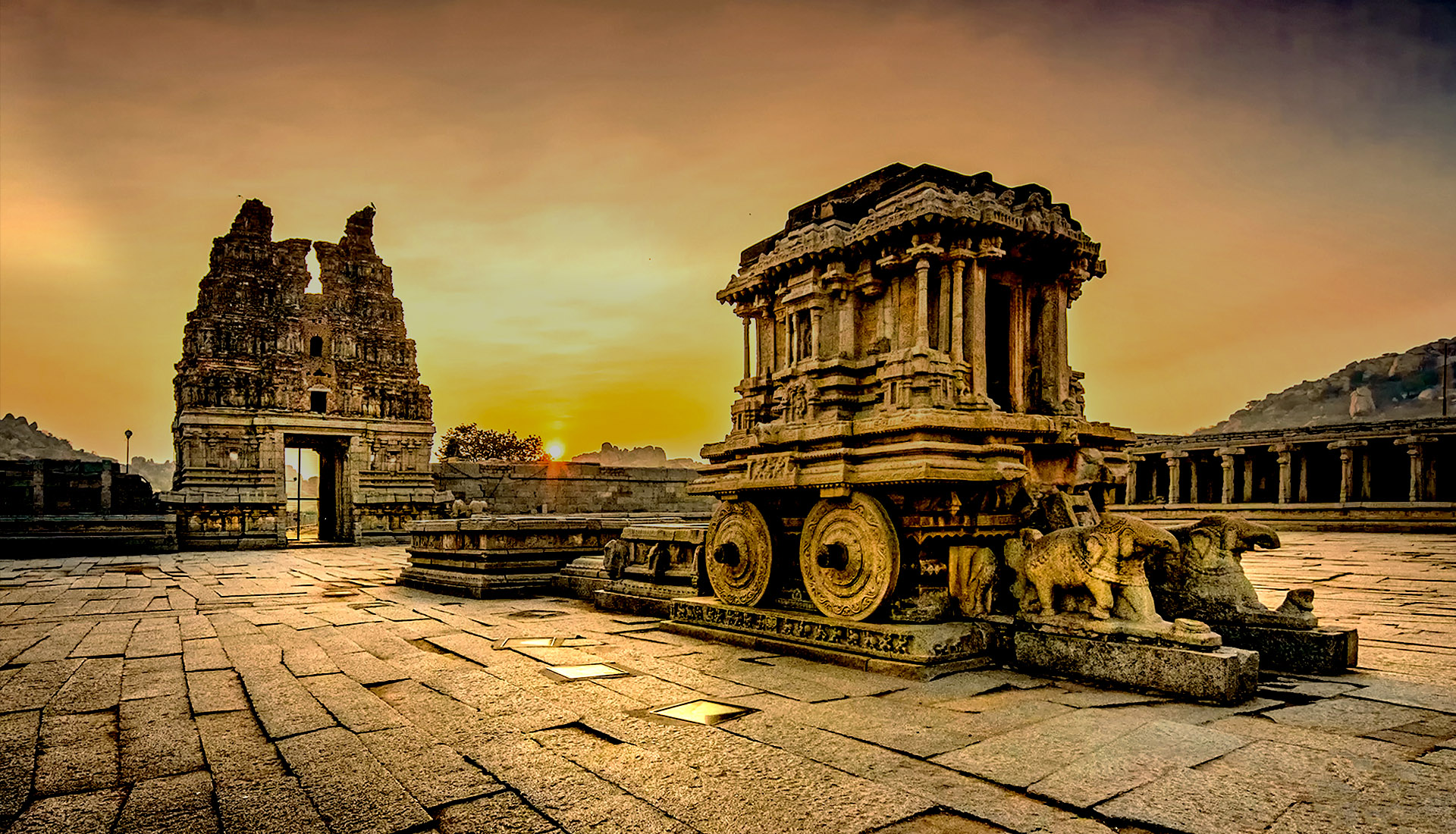Hampi: Tracing its Path to World Heritage Recognition
Nestled in the heart of Karnataka, India, the ancient city of Hampi stands as a testament to the rich heritage of the Vijayanagara Empire. The ruins and remnants of this once-thriving city have earned it a place on the prestigious UNESCO World Heritage Site list. This article delves into the historical significance, the factors that led to its recognition, and the profound impact of Hampi becoming a World Heritage Site.

Unveiling History:
Hampi’s history dates back to the 14th century when it served as the capital of the mighty Vijayanagara Empire. This city flourished as a hub of culture, trade, and architecture until it was ravaged by wars and invasions. The ruins that remain today are a striking testament to the empire’s grandeur and the remarkable architectural feats of the past.
Date of Designation:
Hampi was officially recognized as a UNESCO World Heritage Site on November 1, 1986. This designation marked the global acknowledgment of Hampi’s historical significance and the collective responsibility to preserve its legacy.
Reasons Behind Selection:
The inclusion of Hampi on the list of World Heritage Sites is attributed to several compelling reasons:
- Architectural Brilliance: The ruins of Hampi boast an array of intricate temples, palaces, and other structures that showcase the zenith of Indian temple architecture. The city’s monuments represent a fusion of various architectural styles, displaying the diverse influences that shaped the empire.
- Cultural Heritage: Hampi’s ruins provide invaluable insights into the daily life, culture, and religious practices of the Vijayanagara Empire. The ruins of temples, marketplaces, and residential complexes provide a vivid depiction of a bygone era.
- Historical Significance: As the capital of one of the most powerful empires in Indian history, Hampi played a crucial role in shaping the cultural landscape of the region. The city’s ruins narrate tales of conquest, commerce, and artistic endeavors.
Impact of World Heritage Designation:
The recognition of Hampi as a World Heritage Site has yielded profound impacts:
- Conservation and Restoration: The UNESCO status has spurred efforts to preserve and restore the delicate ruins, ensuring that they are safeguarded against the ravages of time and environmental factors.
- Tourism and Economy: The designation has led to increased tourism to the region, benefitting the local economy and providing opportunities for the community. This influx has facilitated the growth of hospitality and tourism-related industries.
- Cultural Exchange: Hampi’s global recognition promotes cultural exchange and cross-cultural understanding. It serves as a platform for sharing the historical and artistic heritage of India with the world.
- Educational Significance: The World Heritage Site status encourages research and educational initiatives, creating awareness about the history, architecture, and culture of the Vijayanagara Empire.
The journey of Hampi from a grand empire’s capital to a UNESCO World Heritage Site underscores its enduring legacy. As we explore the remnants of this remarkable city, let us appreciate not only its architectural splendor but also the efforts to protect and pass on this heritage to future generations. Hampi’s World Heritage status serves as a reminder that history is not just confined to textbooks; it lives on through the tangible echoes of the past.




